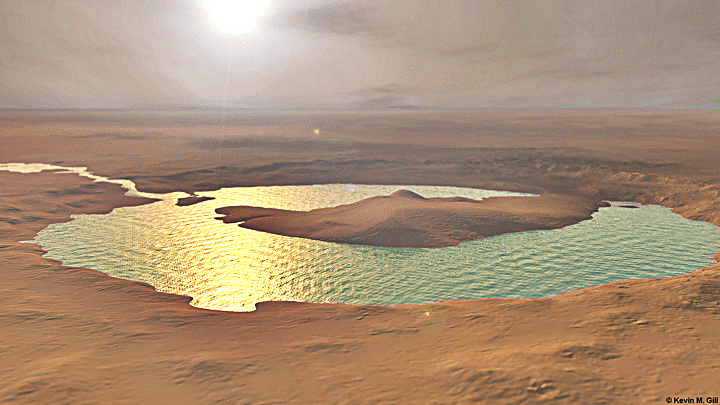The images
were taken when the two planets were almost at opposition – their closest
points to Earth. Saturn, snapped on June 6, was 2.2 billion kilometers (1.36
billion miles) from Earth. Mars, seen on July 18, was 59.4 million kilometers
(36.9 million miles) away.
Saturn’s
tilt, at 27 degrees to its orbit, means we get different views of the planet on
a decadal or so cycle. At the moment we’ve got a pretty great view of it tilted
towards us, as seen by these Hubble images.
“Saturn has seasonal changes caused by the planet’s 27-degree axial tilt,” said NASA.
“With
summer in the northern hemisphere, the atmosphere is now more active. This may
be responsible for a string of bright clouds visible near the northern polar
region that are the remnants of a disintegrating storm. Small, mid-latitude
puffs of clouds are also visible.”
Hubble's
amazing snap of Saturn. NASA, ESA, Amy Simon and the OPAL Team, and J.
DePasquale (STScI)
Hubble also
captured some neat shots of Saturn's moons. NASA, ESA, A. Simon (GSFC) and the
OPAL Team, and J. DePasquale (STScI)
The view
from Hubble is so good that we can actually see Saturn’s famous hexagonal storm
at its north pole, which has been ever-present since it was first spotted by
Voyager 1 on its 1981 flyby of the gas giant.
Mostly, this
Hubble view of Saturn just shows us how magnificent the planet looks. It’s
bright rings and gorgeous clouds are beautifully resolved by the telescope. And
in a video, we can even see its clouds rotating around the planet.
Hubble’s
view of Mars, meanwhile, is oddly similar – the depths of the planet are also
obscured by cloud. Normally we should be able to see the surface, though, but
the planet is actually engulfed in a global dust storm right now, which has put
NASA’s Opportunity rover in a bit of a pickle.
“Each
Martian year, moderately large dust storms cover continent-sized areas and last
for weeks at a time,” said NASA. “Global dust storms – lasting for weeks or
months – tend to happen during the spring and summer in the southern hemisphere,
when Mars is closest to the Sun and heating is at a maximum to generate winds.”
Mars then
and now. NASA, ESA, and STScI
And here's
an annotated view of some of the features just about visible on Mars. NASA,
ESA, and STScI
These Hubble
observations are useful, as they will let astronomers study the upper
atmosphere of Mars, while spacecraft in orbit can study how the storm behaves
lower down in the atmosphere. There’s still a lot we don’t know about dust
storms on Mars, although we did recently work out where the planet's dust
mostly comes from.
Still, these
Hubble snaps should serve as a pretty good reminder of how great this orbiting
telescope is. Even from millions or billions of miles away, it can get views
like this. Not bad, NASA.


Post A Comment:
0 comments: